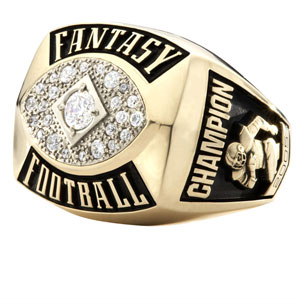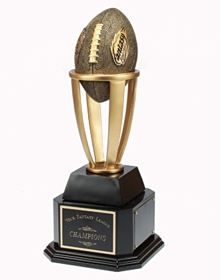Fantasy Football’s popularity still soaring

Let’s Kick This Pig!
Fantasy football has emerged as a prime pastime for millions during the NFL season. Most Americans that participate in this online season play it because a friend has invited them to join a league. Few really know how the game developed. The question is, how did fantasy football emerge?
Fantasy sports began with the popularization of a game created by Daniel Okrent, known as Rotisserie Baseball. Okrent derived the plan while on a flight to Texas. As a magazine editor/writer, Okrent presented his idea to a group of friends in New York, who agreed to start a league. The first game was played at a New York City restaurant called “La Rotisserie Francaise” and the name Rotisserie was adopted for this style of fantasy league.
At the beginning of the baseball season, participants, or “owners”, would draft actual players for their own fantasy teams. The owners would have to compile the stats of each of their players. Once the internet came around, rotisserie baseball exploded throughout the United States.
It was only a matter of time before fantasy games for other sports were invented. In 1983, rotisserie football was born.
Since then the poplurity of fantasy football has far surpassed all other online leagues.
Since 2004, fantasy football has erupted into a billion dollar industry.
The four main “engines” for fantasy football are ESPN, NFL, Yahoo, and CBS Sports. The scoring systems vary for each separate web site.
An alternative to these season long leagues are one week leagues that offer money to the champion. The two most widely used one week leagues are Fanduel and Draft Kings. These leagues offer a draft and league to play in for each week of a season and players put in an ante and the winner takes the largest chunk of the entries.
There are many types of fantasy leagues that you can join. For instance, a league with fewer teams tends to be high scoring due to the fact that your team is stacked with superstars. On the contrary, a league with more teams tends to be lower scoring and in my mind, more interesting. In a bigger league, the owners must actually try. Each team basically has a starting quarterback, a superstar, a few other starters, and a bunch of second stringers.
Fantasy leagues are also popular within Cotter, though these are for fun and bragging rights.
When asked about his large, 20 team fantasy football league, Commissioner Mac Whaley had this to say, “It makes for great competition, lunchroom conversation, and when you have a league as big as ours, it feels like it matters. Competition is entertaining because we have a lot of close games.”
When asked if 20 teams was his limit, “We are gladly accepting suggestions for a new team, ” said Whaley.
Leagues are easy to set up and play in. I have been commissioner of a league the last two years that has drafted the night before the actual NFL season began.
All you need to do in order to commission a league is start a simple account for the website, and recruit enough people to start a league. The website will walk you through the simple process of creating and starting a league. Custom scoring and drafting is up to the commissioner.
In order to join a league, all that is required is an account for that website and an invitation from the league commissioner.
There are many leagues that teams can play each other. In some leagues, points scored on the season is a way to determine who moves on. But most leagues use head to head play, with a winner and loser each week, just like the NFL. After the draft, your schedule is created and you play one team each weekend.
After your acceptance, the draft begins. There are a few main draft orders/choices. The top two choices for the draft are a snake draft or a regular draft. In a regular draft, the order goes (according to our league) 1-20, then starts back over at 1. In a snake draft, the order goes 1-20, then 20-1, and then 1-20, so on and so forth.
During the draft, all of the players are split into their respective positions and ranked. If the team owner is not present, auto-draft will take his place. Auto draft is a system that takes the highest possible player while taking what the team needs. Auto draft is fickle, it can make your team one of the best or worst.
After the draft, you create a clever team name. For instance, the name of my fantasy football team in Mac Whaley’s league is DeMarco Polo, since I have Cowboys starting running back, DeMarco Murray.
During the season, owners must make genius decisions by picking up free agents on the waiver wire, or by conducting trades with other teams. The ultimate goal is to win your division and make it to the playoffs.
The playoffs are the most anticipated times of the season. The playoffs commence near the end of the NFL regular season in most leagues.
At the end of the playoffs, the championship trophy awaits the superior team. Trophies are encouraged. thought not required. Cash for the winner, a ring, or just simple bragging rights, are also championship options.
Some people find that they have trouble getting their picks in on time, or spend too much time poring over stats and stress out from playing general manager. For most fantasy players, however, it is a great way to interact with friends and enjoy the football season.
Here is ESPN’s standard scoring system from ESPN.com:
|
|
|
|
|
|
|
|
|













